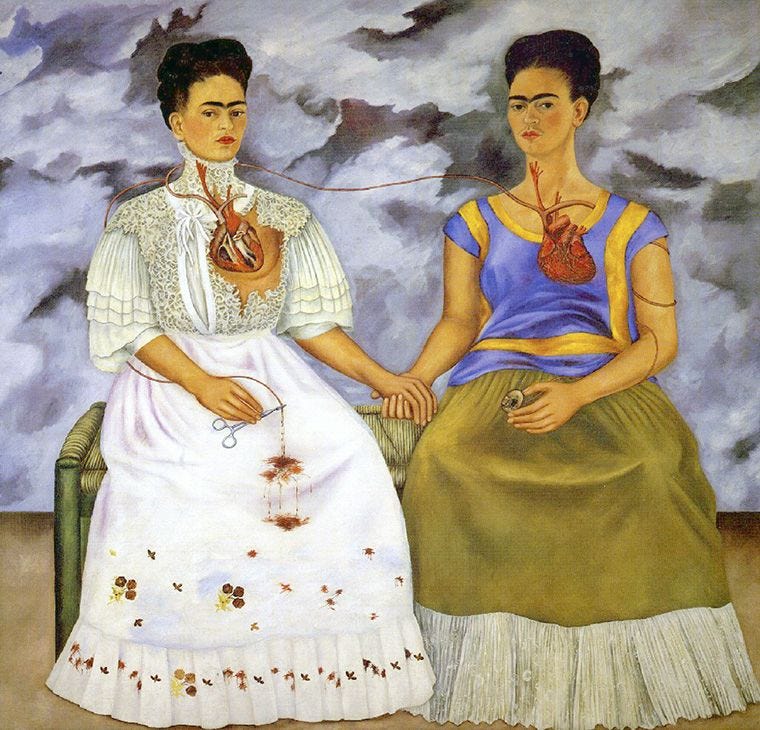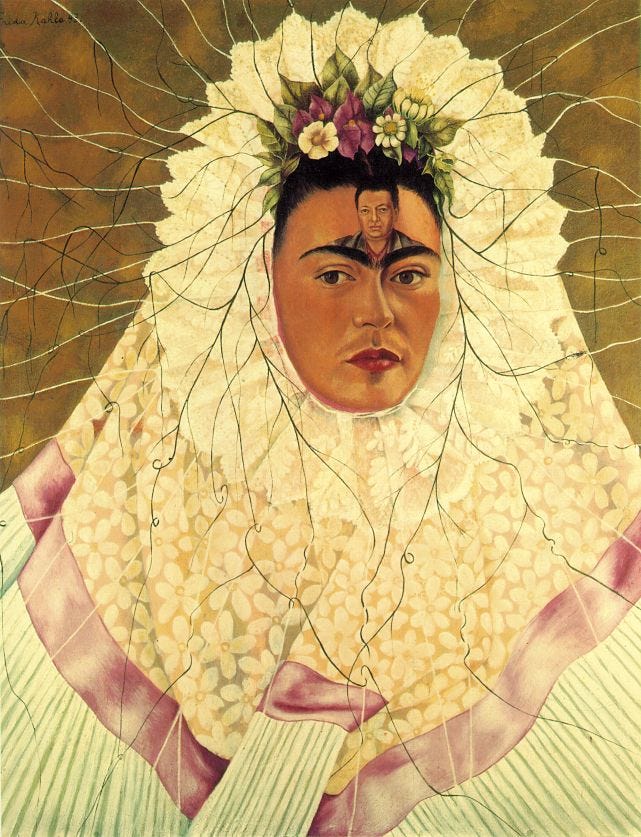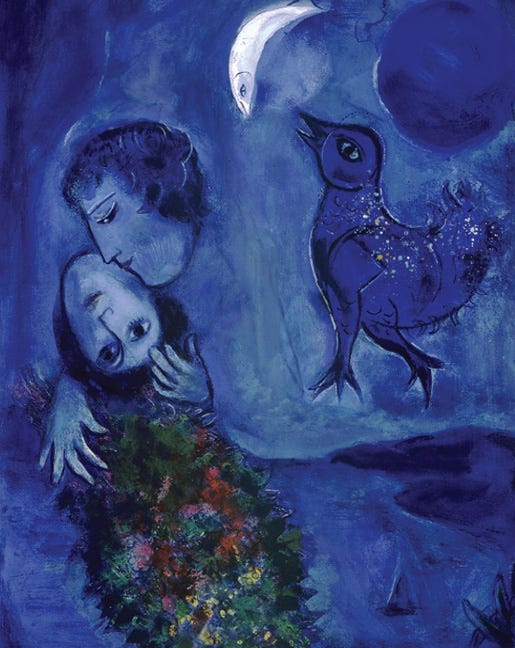Imagine sipping your Sunday tea while casually floating mid-air down the street—welcome to Magical Realism, where the ordinary and the impossible live side by side on just another regular weekend!
While the term is more commonly linked to literature, it actually originated in German art in the 1920s. This style blends realistic scenes with fantastical elements, but unlike full-blown surrealism, which thrives on the bizarre and subconscious, magical realism keeps one foot firmly in reality. It’s not about dreams—it’s about strange things happening in broad daylight as if they belong there. And one of the greatest sources where fantasy and reality merge? Love.
One of the most famous artists associated with this style is Frida Kahlo. Her life—marked by near-fatal accidents, physical and emotional suffering—was also intertwined with one of the most passionate love stories in art history. Her paintings reveal the emotional complexity of her relationship with renowned muralist Diego Rivera. In The Two Fridas, she paints two versions of herself—one holding a broken, rejected heart, the other adored, with a pulsing, connected vein.
In Diego on My Mind, Rivera’s face appears on her forehead, symbolizing how he was always in her thoughts, no matter what happened between them. And a lot happened. Their love was as intense as it was chaotic. They married, divorced, and then remarried a year later—because why go through heartbreak once when you can do it twice?
But Frida wasn’t the only one channeling their relationship into art. Rivera, too, left his mark. His Portrait of Frida Kahlo depicts her as regal and almost untouchable, reflecting his deep admiration for her as both a woman and an artist.
Now, take another sip of your tea and let’s float over to another love story—that of Marc Chagall and Bella Rosenfeld, a couple whose romance seemed pulled from a fairy tale. When Chagall met Bella, he described her as his “promised bride,” and their love became the fuel for some of the most ethereal, love-drenched paintings in history. Unlike Kahlo and Rivera’s stormy relationship, Chagall and Bella’s love was a poetic dreamscape. His paintings often depicted them floating together, melting into each other, and defying gravity—as if love itself could lift them off the ground.
But even this magical love was not without tragedy. Bella’s sudden death in 1944 left Chagall devastated, and for a time, he stopped painting altogether. When he returned to his work, his paintings carried a deep sense of longing. The vibrant floating figures remained, but now with an undeniable undercurrent of grief. Yet, even in sorrow, Chagall’s magical realism kept their love alive on canvas—because if you can't bring someone back, at least you can paint them into eternity.
Magical realism reminds us that reality isn’t as rigid as we think—and maybe there’s a little magic floating above us if only we remember to look up!
Art needs more eyes — and so does this blog.
It’s free to read, but only grows if it travels.
Liked it even a bit? Tap the heart.
A line stuck with you? Drop it in a comment.
Smiled once? Hit restack.
Want to keep this writing alive? Send it to a curious friend to subscribe.








